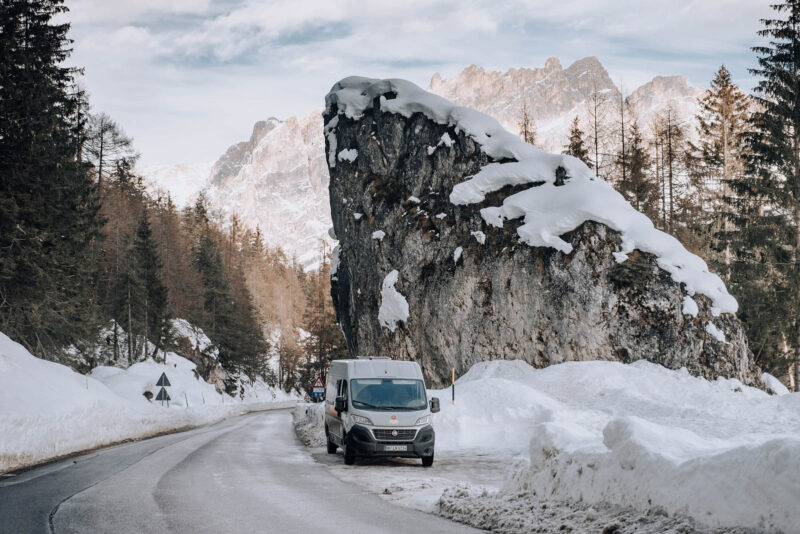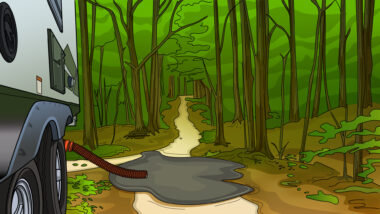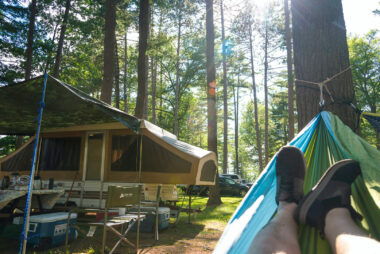Table of Contents Show
As winter quickly approaches and the temperatures begin to drop, you may start thinking about how to protect your RV.
Whether you plan to RV during cold weather or put it in storage, we have some things you should keep in mind. Let’s take a look so you can get ready for winter’s arrival.
Can You Use Your RV During Winter?
You can use your RV during winter as many manufacturers create their RVs to handle all four seasons.
These RVs will have extra insulation, tank heaters, and even special venting into the underbelly of your RV to avoid pipes bursting.
However, even with all of these features, you can still do a few things to maximize your winter camping experience.
How to Protect Your RV During Cold Weather
You can protect your RV during cold weather in several ways. You may need to use multiple of these tips to enhance your winter RVing experience significantly.
Here are some tips if you RV in cold weather. And following those, we will provide ways to protect your RV if you keep it in storage. Let’s take a look.
Use Heat Tape on Your Plumbing
You want to ensure the plumbing system in your RV doesn’t freeze when the temperatures drop.
Wrapping your water lines and other essential plumbing components in heat tape protects them from damage during sub-freezing temperatures.
When your water lines and other plumbing components freeze, you risk fittings failing and water lines bursting.
Both can create massive amounts of damage to your RV.
Using heat tape helps keep your plumbing system safe and avoid expensive repairs.
Duct Bays with Pipes for Heat
If your RV came with a four-season package, it will likely already have heat ducts in your storage bays.
If not, you can modify your ducting to pump warm air into essential areas.
Doing so can help protect pipes from freezing and other components from damage during cold days.
Anytime the furnace kicks on in your RV, it will pump warm air into the storage bays via the upgraded heat system.
Use a Heated Water Hose
- Premium Grade Drinking Water Hose: Camco's RV water hose is constructed with NSF/ANSI 61 certified hose for drinking...
- Provides Freeze Protection: Receive water line freeze protection down to -20°F (-28°C) with this 25' Camco heated...
Using a heated water hose helps ensure water doesn’t freeze as it enters your RV.
These hoses cost more than a standard water hose but having one that won’t freeze can save you a lot of money during cold weather.
A heated water hose plugs into a standard electrical outlet and uses a heat strip that runs along the hose.
This heat strip prevents it from freezing and avoids damaging your water connections as well.
Stationary? Skirt Your RV
If you plan to remain stationary, installing a skirt around the bottom of your RV can help.
This skirting prevents cold air from blowing under your rig.
Having cold air on all four sides of your RV reduces the effectiveness of any heat source inside.
The furnace or space heater will likely struggle to keep up, especially on windier days.
Whether you use hay bales, an insulation board, or purchase a custom RV skirt, they all function the same.
They block the wind and cold air from your RV to provide insulation.
Use Insulated Vent Covers for Roof Fan Vents
Warm air rises, and so during the winter months, you’ll want to close off and secure any spaces that allow warm air to escape.
The vent covers on an RV’s roof are among the worst culprits for letting warm air escape.
They’re typically located on the ceiling and made from very thin plastic, which allows the warm air to escape.
You can get foam pillows and other covers available that fit precisely into the vent.
These foam pillows fill up the space and work as insulation to keep cold air out and warm air inside.
Insulate Windows
Much like the vent covers, your RV’s windows can become an enemy when trying to keep your RV warm.
An RV has lightweight windows. Manufacturers want to save as much weight as possible to improve towing.
However, cold air can pass through a thin RV glass window easily. You can purchase insulation kits for your windows from any big-box home improvement store.
With these kits, you can often use a heat gun or hairdryer to shrink the coverings to fit your windows snuggly.
Many RVers choose to use insulated curtains to help maintain a comfortable climate.
Many RVers love this option because they can keep an RV cool in the summer and warm in the winter.
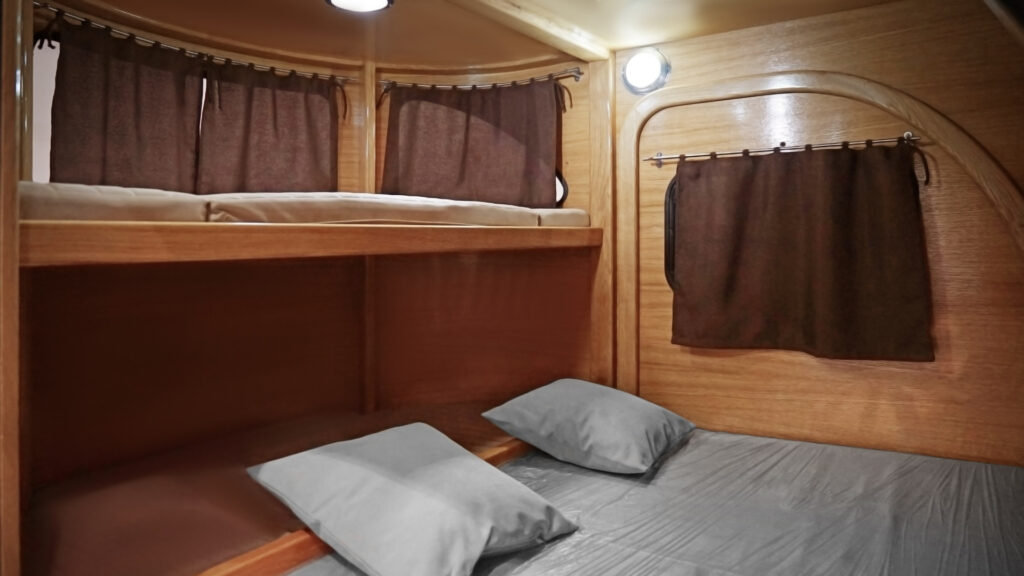
Pro Tip: Learn how insulation can keep you comfortable year-round.
In a Motorhome? Block Off Cab with Blankets for Insulation
If you RV in a motorhome during cold weather, hang a blanket or two to block off the cab space. This large and empty area contains lots of cold air.
By blocking off the cab space with blankets, you limit the amount of space to heat in your RV.
The less area a furnace has to warm, the faster and more efficiently it will work.
Don’t Leave Gray Tanks Open in Freezing Weather
You can avoid having your sewer line freeze by only dumping when necessary.
If you RV during cold weather, you should always keep an eye on the temperatures.
Knowing when it will drop below freezing can allow you to empty your RV tanks just before the cold weather arrives.
This keeps your RV tanks full as long as possible, allows for a good flush of your plumbing, and protects your system during the cold weather.
If Your RV Is in Storage
If you plan to put your RV in storage at the end of the season, you can do a few things to protect your RV. Let’s take a look.
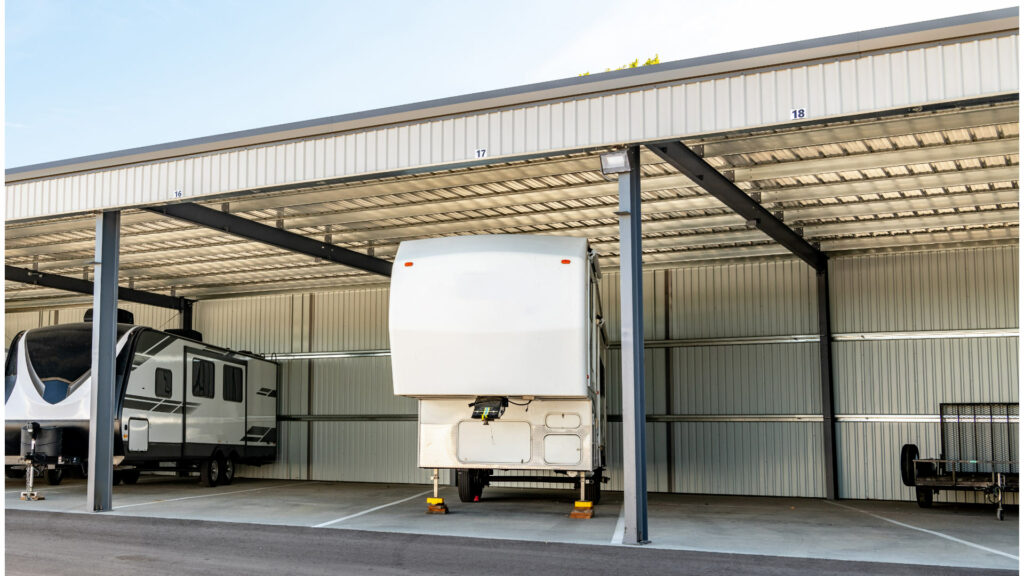
Winterize Your Plumbing
Most importantly, you need to winterize your plumbing correctly. This process will change from camper to camper.
However, no matter how you do it, you want to ensure no water remains in your lines.
You should either thoroughly blow out your water lines or siphon RV-rated antifreeze into them.
Doing so will help avoid any potential damages should your RV experience sub-freezing temperatures for an extended time.
You don’t want to discover significant leaks and cracks when you pull your RV out of storage at the start of the next camping season.
Pro Tip: Use one of our top ranked winterizing kits to get the job done right.
Remove Battery
No matter what type of battery you have, remove it from your RV.
You want to store it in whatever temperature range the manufacturer indicates is safe.
Keep it charged and ready to go when needed.
You can use a simple trickle charger to keep your RV battery in optimal condition.
This will ensure that your battery lasts for years to come and provide optimal performance during its life.
Use an RV Cover if Outside
Finally, you can cover your rig. You may easily overlook your RV’s exterior during cold weather.
The winter months can bring harsh winds, snow, and ice which can cause damage to decals and exterior coating.
While it may not be easy to take on or off, a cover can keep your RV looking good as new.
Winter RVing Can Be Fun if You Know How to Stay Warm
If you know how to stay warm, you can have fun winter RVing. You’ll get to experience the season in some incredible places that you can’t see any other way.

It can also allow you to enjoy some of the best parks and campsites in privacy, as fewer people RV during the winter. Do you enjoy cold weather camping? What’s your favorite thing about winter RVing?
Last update on 2025-01-19 / Affiliate links / Images from Amazon Product Advertising API




